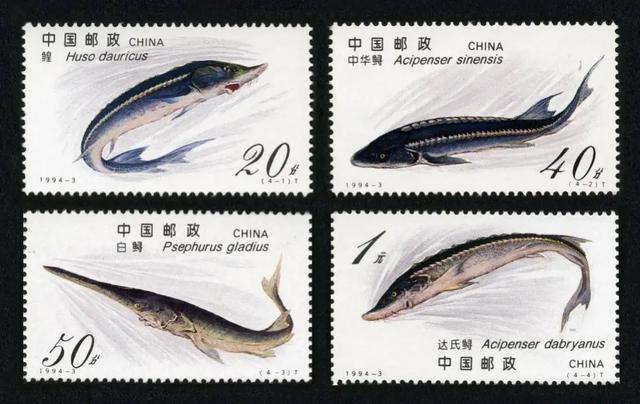On July 21, 2022, we received a very sad news: The World Conservation Union (IUCN) updated the Red List of Endangered Species. The list shows that the Yangtze River endemic species white sturgeon (Psephurus gladius) has become extinct. This means that another unique species in our country has disappeared from the earth, and it is also a living fossil species that has been wandering on the earth for 150 million years.
Basic characteristics of paddlefish

The white sturgeon is a unique species in the Yangtze River and the largest freshwater fish in China. It is known as the "King of China's freshwater fish". It is one of the few ancient fishes that survived the Cretaceous period 150 million years ago. It is a national first-class fish. protected wild animals. The ancient Chinese paddlefish was called tuna. Also known as Chinese swordfish. Because its snout is shaped like an elephant's trunk, it is also commonly known as the elephant fish. Its body length is 2 to 3 meters and its weight is about 200KG. According to the records of the famous zoologist Professor Bingzhi, a 7-meter-long and one-ton individual was caught in Nanjing. Sichuan fishermen also have a saying of "a thousand catties of Lazi (Chinese sturgeon) and a ten thousand catties of Elephants-Are-Endangered.html">elephants (white sturgeon)". Therefore, the reputation of "the king of freshwater fish in China" is not unfounded.
Commemorative stamps have been issued

The "Sturgeon" stamps issued by China on March 18, 1994 are a set of four, namely White Sturgeon (a national first-level protected animal), Acipenser dabricus (also known as Yangtze Acipenser), Chinese Acipenser (also known as King Tuna, National first-level protected animals), catfish. They respectively belong to the family Acipensidae and the family Acipensidae of the order Ichthyosaurus. They are both rare animals protected by the state. They are specialty fish with high economic value in the Yangtze River, Heilongjiang, Pearl River and other river basins. Their meat and caviar enjoy a high reputation in the international market. , known as black gold. Because the sexual maturity cycle of sturgeon and catfish is long, it takes 9 to 10 years for sturgeon and 11 to 18 years for catfish. The regeneration speed cannot match the fishing speed and is in danger of extinction. In the 1980s, China gradually established some protection and research institutions.
We have never met, but we have heard that we have never seen each other again

Many netizens felt sad when they heard the news, but also said they had never seen it before. This is because there has been no news of paddlefish appearing in almost 20 years. The last time he appeared in public was in 2003.
On the afternoon of January 27, 2003, after three days and three nights of careful treatment by Wei Qiwei, a member of the IUCN expert team and a researcher at the Yangtze River Institute of Chinese Fishery Sciences, the "giant panda in the water" - a wild white sturgeon, returned to the Yangtze River in Yibin, Sichuan. This white sturgeon was accidentally caught by a fisherman in Nanxi County in the Yangtze River section of Fuxikou, Nanxi County on the morning of January 24. It is a female sturgeon, about 4 meters long, weighing more than 150 kilograms, about 30 years old, with a belly There are a large number of fish eggs waiting to be laid. There were obvious scars on its head and tail, and there were some red patches on its white skin, which looked like subcutaneous congestion. It is reported that an electronic tracking device was installed on the paddlefish before it returned to the Yangtze River. From then on, experts will track the paddlefish's movements 24 hours a day. However, on the fourth day of tracking, the paddlefish suddenly accelerated upstream and entered the rapids section of the main Yangtze River. The tracking boat accidentally ran aground on the rocks. After the boat was repaired, the paddlefish signal could no longer be found.
Since then, scientific researchers have not discovered paddlefish again. Paddlefish are large in size and small in number, making artificial breeding difficult. The technology and communications back then were relatively backward, making it difficult to capture and breed them artificially. When technology matured and communications improved, it became difficult to find them.
Wei Qiwei said: “For a wild population like paddlefish, it needs a relatively large life span and range. Its spawning requires corresponding flowing water and pebbles on the river bottom. Small fish will swim to the middle and lower reaches or even the estuary to eat fish. They made a living and grew up here. Historically, white sturgeons may have been distributed in coastal waters, including the Yellow River. Later, the spawning grounds in the upper reaches of the Yangtze River could not be returned, and the populations slowly died out one after another. "
In fact, this is not the first time that the word "extinction" has been associated with paddlefish. In December 2019, in a research paper published in the international academic journal "Science of the Total Environment", Wei Qiwei pointed out that between 2005 and 2010, the white sturgeon had become extinct. Not only that, the paddlefish may have become extinct in 1993. The species has become functionally extinct.
Sturgeons worldwide are still facing the threat of extinction
In recent centuries, as human activities have intensified, the natural population of sturgeon has declined sharply and is on the verge of extinction. It is called "the most threatened group in the world."
The results of the IUCN global sturgeon reassessment show that all 26 existing species of sturgeon in the world are facing the threat of extinction. About two-thirds of the sturgeon population is critically endangered. River and freshwater biodiversity are vital to humans and nature, but freshwater biodiversity continues to be lost globally and river ecology continues to degrade. Aina Louvi, chairman of the IUCN Sturgeon Expert Group, said, "The results are shocking and sad, but expected. The assessment shows that sturgeons still cannot take off the title of 'the most threatened group in the world'. "
Globally, major threats to sturgeons include illegal fishing due to the illegal trade in wild caviar and fish meat, dams blocking their migration routes, and unsustainable sand and gravel mining destroying their spawning grounds. and habitat loss.
“The extinction of white sturgeons and the extinction of Yangtze sturgeons in the wild has sounded a wake-up call for us,” said Zhou Fei, deputy director general (projects) of WWF Beijing Representative Office. “The results of this red list update remind us that we need to turn around the situation of freshwater through rescue protection. The trend of biodiversity loss requires the planning and implementation of systematic protection measures to address long-term threats. Manual measures and investment from a single department alone are far from enough. We need the participation and support of more institutions and social forces to help the Yangtze River Sturgeon. "Downgrade" as soon as possible to better protect the Chinese sturgeons migrating in the river and sea, and jointly create a bright future for the river and sea ecosystem."
However, the recovery of rare and endemic species is very difficult, and scientific researchers are still racing against time to try to mitigate the negative impact of the decline of wild resources on the reproduction of rare aquatic species.
Protect wild animals and eliminate wild game.
Maintaining ecological balance is everyone’s responsibility!
animal tags:
We created this article in conjunction with AI technology, then made sure it was fact-checked and edited by a Animals Top editor.